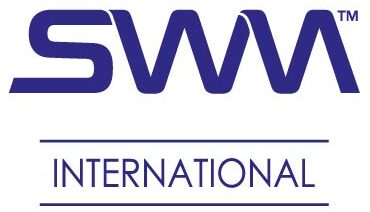Sustainability
November 18, 2024
CSRD update: Progress on our double materiality assessment
Like many organizations across Europe, SWM International is working hard to prepare for compliance with the EU’s Corporate Sustainability Reporting Directive (CSRD). This will apply to us from 2026 (covering 2025 reporting). A key step in the CSRD reporting process is to carry out a ‘double materiality assessment’ (DMA). Read on to learn more about this essential tool and how it’s helping us to develop a more holistic reporting strategy.
What is a double materiality assessment?
The DMA is a framework for identifying the areas of sustainability that are most relevant to your company – both in terms of your impact on them and how they impact you. The topics covered may include a range of environmental, social, and governance issues, such as biodiversity, waste management, working conditions, and corporate culture.
Driving transparency through collaboration
To make the DMA process as seamless as possible, the leadership team set up a working group – and they’ve already made important progress. The first step? A knowledge-gathering and alignment program, bringing in expertise from across the company, to build a collective understanding of what sustainability means at SWM International.
“Prior to the official DMA kick-off, we conducted several training sessions and roundtable discussions that allowed colleagues from different business areas to share their perspectives,” says Piotr Matczak, CFO of SWM International. “By engaging in these cross-functional conversations, we were able to gain a more holistic view of where our organization’s sustainability risks and opportunities may lie.”
First steps on our DMA journey
Working with the sustainability consultancy Ekodev, the leadership team began the formal DMA process in September. “The DMA aims to highlight all the major impact areas a company has across its entire value chain,” explains Marc Bettoli, ESG Manager at SWM International. “For example, we already know that climate, water usage, and forests will be critical issues for us as a business. But working with Ekodev will allow us to be much more specific and comprehensive in our reporting on these and other topics.”
The finance function will also play a key role in facilitating the DMA. “The CSRD legislation requires a highly rigorous and transparent approach to non-financial reporting – making it much more similar to traditional financial reporting,” continues Piotr. “It’s therefore essential to bring a financial perspective to the table. Finance expertise can help to streamline and standardize the process of categorizing sustainability risks – and working with auditors to ensure that our reporting complies with the legislation.”
The DMA: A strategic catalyst?
However, the broad and detailed coverage of sustainability topics enabled by the DMA isn’t just important from a regulatory perspective. Indeed, by encouraging us to measure and monitor a wider range of impacts, it provides a framework to strengthen our existing strategy. This will help ensure that we can operate more sustainably in the long term.
“Far from being an administrative burden, we’ve come to see the DMA, and the CSRD more broadly, as a key strategic tool that will push us further in our existing sustainability commitments,” adds Marc. “The process is helping us identify even more opportunities to maximize our positive impact by working with internal and external stakeholders – whether it’s through decarbonization, eco-design, or supply chain management.”
Working toward CSRD compliance
The team expects to complete the DMA process by the end of Q1 2025, and there’s a lot of work to be done before then. “The next steps will be to establish the key data points we need to collect – as well as key performance indicators and impact hotspots,” concludes Piotr. “By working closely together across the organization, we can deliver a comprehensive DMA that will support our reporting strategy for years to come.”
